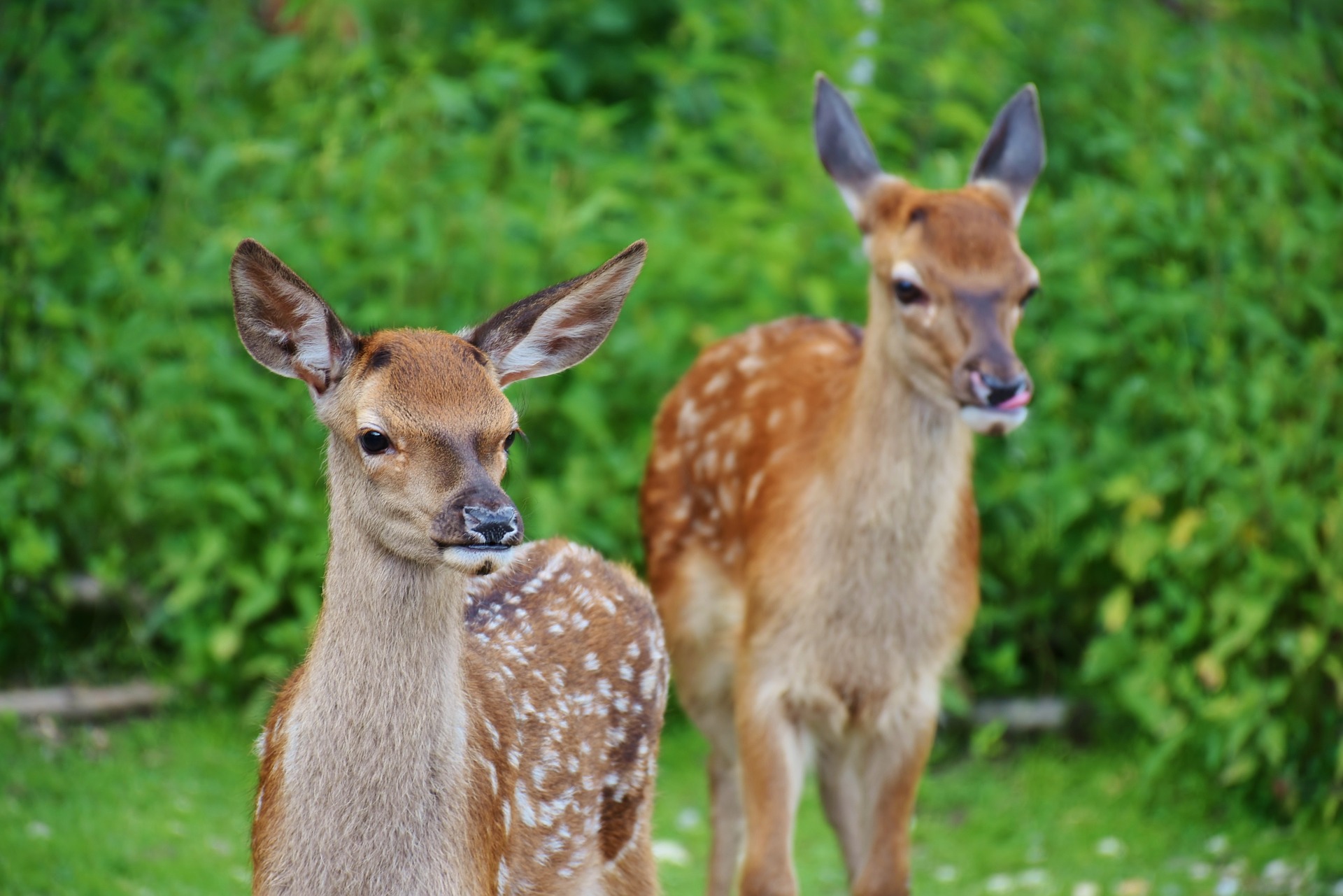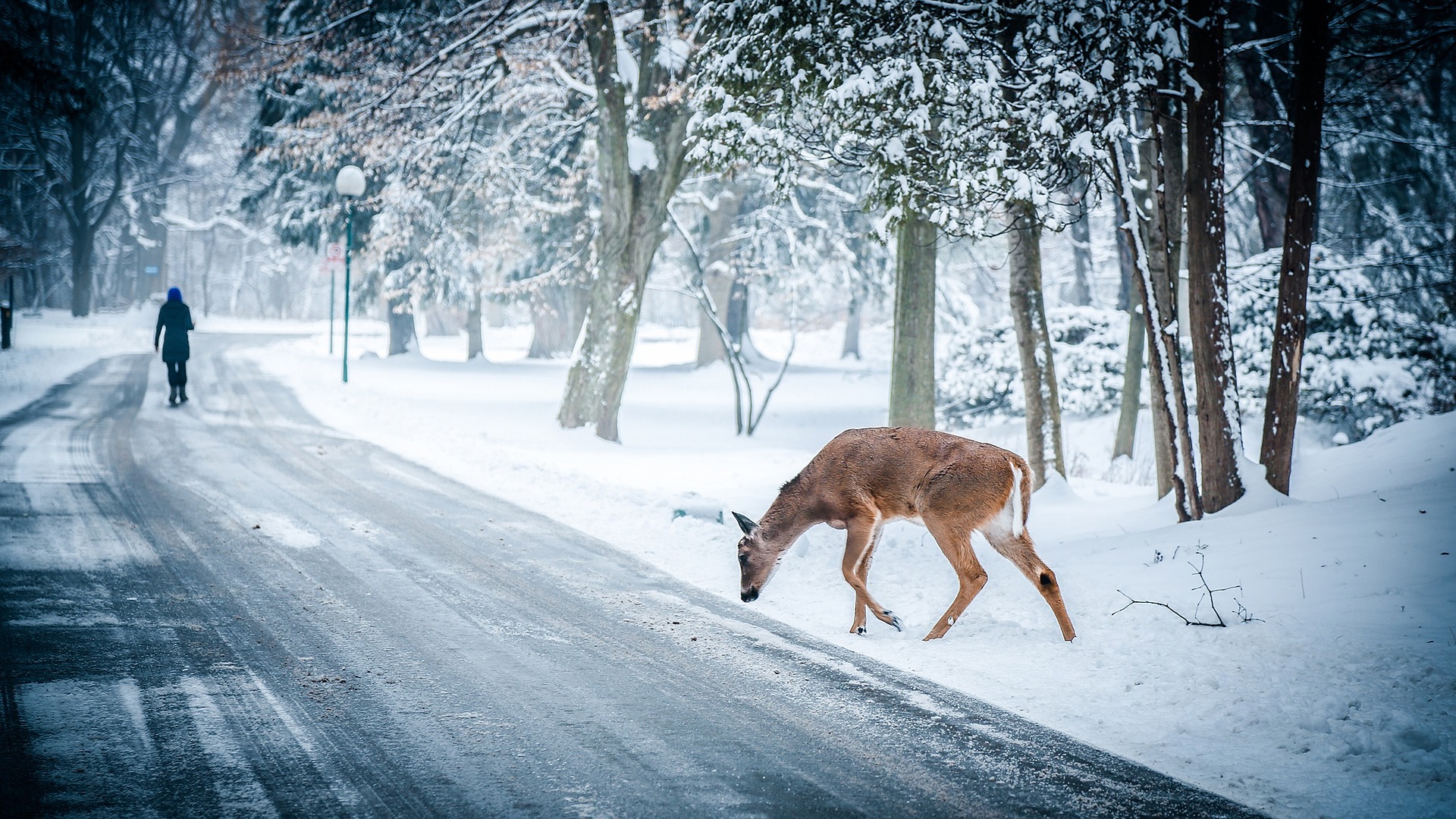No matter what time of year it is, being attentive at all times when behind the wheel is crucial. However, when deer season comes around, it’s more important than ever to be vigilant while driving.
The Insurance Institute of Highway Safety estimates that more than a million crashed related to deer happen every single year in the United States. The good news is you can avoid an accident and the potential insurance rate hike that comes with by following the tips below.

Watch Out for Additional Deer
If you have spotted a single deer, don’t assume that you’ve avoided an accident because it’s on its way and away from the car. The reality is that most deer do not travel on their own. They are pack animals, so be extra cautious once that single white-tailed deer has passed in front of you. There's often one or two more hiding in the bushes. Also be cautious if you see a large pack in the street and half go one way and the rest go another. You never know when one will change its mind and hop back across the street. It's best to slow to a stop and let them clear out before moving slowly on.
Watch for other deer that might be in the same area. Slow down your vehicle, even if you’re in a hurry, and pay attention in case another deer darts out into the road. You don’t want to be caught off-guard in this situation.
Don’t Swerve into the Other Lane
Even if you’re being extra vigilant and cautious when you drive, a deer can sometimes pop out suddenly from the woods and close in on your vehicle. If you’ve already slowed down and are being careful, this is a good start to avoiding an unneeded collision.
If you are worried a collision is imminent, you may be tempted to instinctively swerve your car into the other lane. However, this can result in even worse injuries if another car is coming or if swerving causes you to go off the road entirely. If your speed is low, you may experience less damage to your vehicle.
Avoid Distractions When Possible
There are a lot of things that can be distracting while you are driving. Having any of these things going on can make it much more likely that you end up in an accident, whether related to a deer or not. If you’re aware that you are in a location where there might be deer, this is especially important.
So that means turn off your phone and stop texting. Don’t take calls without a headset. Don’t turn the radio dial or have a snack. Put your focus on the road at all times.
.jpg)
Timing is Extremely Important
The times when you are most likely to run into deer on the roads is early in the morning and during dusk. These also happen to be the times when your vision is most compromised when operating a vehicle.
To add even more to this troublesome situation, deer are more likely to be on the move during mating season from October through January. This also happens to be a time when many workers are on the road when the sun has already set. Because of that, this is a time of the year when you want to be even more careful than normal. Pay extra attention at this time of year, especially when it’s after dark.
Keep Your Seatbelt Buckled at All Times
While having your seatbelt on may not avoid running into a deer, it will prevent you from having additional injuries if the worst-case scenario occurs. It’s also crucial that you ensure everyone who is riding in your vehicle is wearing their safety belt, as well. The last thing you want to do is end up in a collision with a deer and risk injury of yourself or others who are in the car with you.
This is something you should be doing at all times anyway, but it can have a huge impact if you collide with a large and stationary object, like a deer.
Ask for a Bit of Help from Passengers
Now that you know your passengers are safely buckled in, there is a way for them to help you avoid ending up in an accident. Let the people in your car know that they can help by watching for deer as well. The more eyes you have on the surrounding area, the better the chance you have of avoiding a potential collision.
Even if your passengers happen to notice deer in a field that is a distance from the road, there could be more that are nearer to you, so you'll want to slow down and be careful.

Watch for the Signs
When we say watch for the signs, we mean that quite literally. If you happen to see deer crossing signs, that means you should begin to be more cautious. Deer are known to be in the area and crossing over the roads you are traveling on. Look out for deer in any of these locations.
Again, you should always remember that deer commonly move in packs so seeing even one may mean others are near. If it’s after dark, you should also watch for reflections. The eyes of deer may reflect in your car lights and give you a second to act before an accident.
Move to the Center Lane
While you may not always be in a situation where the road is multi-lane, if it is, it’s best to position your car in the middle lane. This should only be done if local law permits it, but it can prevent an accident from occurring.
When you’re far from the sides of the road, you give any deer extra space and may prevent them from becoming startled and bolting into the road. Take advantage of the middle lane if it is available for your safety and those of any passengers in your car.
Be Ready to Flash the Lights and Honk the Horn
If you catch sight of a deer on the side of the road or see one that is in the road itself, slow your car down and push on your horn. Deer have ears that can individually pivot, which means they are excellent at pinpointing where a sound comes from.
When you lay on the horn a few times, this gives them the chance to know where the vehicle is and move away. However, you can’t trust that this will happen. Slow down and pay attention to what is happening. Flash your lights to give additional attention to get the deer to move.
What to Do if You Hit a Deer
Hopefully, with the help of the tips above, you won’t ever end up in a situation where you hit a deer or other large animal in the road. However, in case that happens, you should be aware of what steps to take next. The first thing you want to do is pull over as quickly as you can do so in a safe manner. Next, turn on your emergency lights until you are certain you and the vehicle are safe.
You will want to call 911 if you have injuries or the police if your vehicle is damaged. Whether the deer is alive or not, stay away from it as it could be dangerous. Finally, make sure to get in touch with your insurance company to report any vehicle damage.

